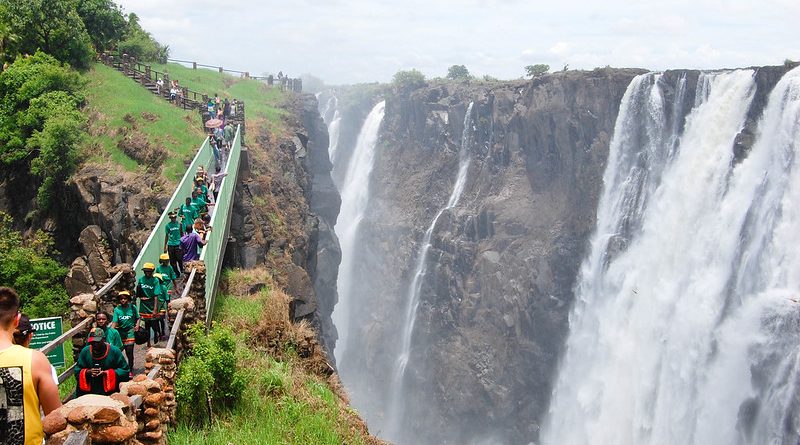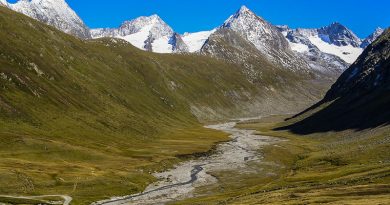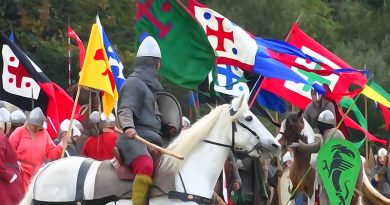Livingstone: Zambia’s old capital
The area around this Zambian settlement was discovered in 1855 by the explorer and missionary, David Livingstone, after whom the town takes its name. It is said Livingstone provided the Christianity to the region and Cecil Rhodes the Commerce and “Civilisation.”
Livingstone established a small settlement nearby Victoria Falls and vowed to return. However, its transformation into a major colonial outpost didn’t happen until the arrival of the British businessman Rhodes.
Until 1935, Livingstone was the capital of Zambia (then Northern Rhodesia). Lying 10 kmto the north of the Zambezi River, it is a tourism attraction center for the Victoria Falls and a border town with road and rail connections to Zimbabwe on the other side of the Victoria Falls. Livingstone, the Scottish explorer and missionary was the first European to explore the area.
He was also the first European to set eyes on Mosioa Tunya or ‘the smoke that thunders’, renaming it after his queen – the Victoria Falls.
Livingstone wanted to liberate Africa from slavery. He believed the way to do it was to introduce the three Cs. Commerce, Christianity and civilisation.
In the 1890s Cecil Rhodes’ British South Africa Company established British rule north of the Zambezi and launched a wave of mineral prospecting and exploration activity and as well ventured into other natural resources such as timber, ivory and animal skins in a territory called North-Western Rhodesia.
The main crossing point of the Zambezi was above the falls at the Old Drift, first by dugout canoe, later by an iron boat propelled by eight Lozi paddlers, or a barge towed across with a steel cable. . As the Old Drift crossing became frequently used, a British colonial settlement sprang up there and around 1897 it became the first municipality in the country, and it is sometimes referred to as ‘Old Livingstone’. Its proximity to mosquito breeding areas caused deaths from malaria, and so after 1900 the Europeans moved to higher ground known as Constitution Hill or Sandbelt Post Office, and as that area grew into a town it was named Livingstone in honour of the explorer.
In the mid-1890s Rhodesia Railways had reached Bulawayo in Southern Rhodesia spurring industrial development there. Rhodes’ vision was to keep pushing north to extend the British Empire, and he would have built it to Cairo if he could. In 1904 the railway reached the Falls on the southern side and construction of the Victoria Falls Bridge started.Too impatient to wait for its completion, Rhodes had the line from Livingstone to Kalomo built and operations started some months in advance of the bridge using a single locomotive which was conveyed in pieces by temporary cableway across the gorge next to the bridge building site
The city was founded in 1905.The British South Africa Company moved the capital of the territory there in 1907.In 1911 the company merged the territory with North-Eastern Rhodesia as Northern Rhodesia. Livingstone prospered from its position as a gateway to trade between north and south sides of the Zambezi, as well as from farming in the Southern Province and commercial timber production from forests to its north-west.
A number of colonial buildings were erected which still stand.Although the capital was moved to Lusaka in 1935 to be closer to the economic heartland of the Copperbelt, industries based on timber, hides, tobacco, cotton (including textiles) and other agricultural products grew. A hydroelectric plant was built taking water from the Eastern Cataract of the Falls. The town of Victoria Fallsin Southern Rhodesia had the tourist trade, but many supplies were bought from Livingstone.
Of all the towns in Northern Rhodesia, colonial Livingstone took on the most British character.Surrounded by large numbers of African settlements, it had a strongly marked segregation which while not being officially enshrined as an apartheid policy, had similar practical effects. The north and western areas of the town and the town centre were reserved for the colonial government and white-owned businesses and associated residential areas, while African townships such as Maramba (named after the small Maramba River flowing nearby) were in the east and south and were inhabited by working servants, craftsman, tradesman, as well as large numbers of non-working black families suffering under welfare dependency. Asians and people of mixed race owned businesses in the middle, on the eastern side of the centre.
As the British government began publicly discussing independence, and news of the large scale genocide of white colonials in nearby Belgian Congo was heard, many white residents feared abandonment by the British colonial government.
Consequently, many began making moves to migrate south toward Southern Rhodesia or South Africa. When Northern Rhodesia obtained independence as Zambia, many more whites continued to leave.At the end of British rule in 1964, Africans were handed a country in which there were only 100 black college graduates. In 1968, a one party state had been established which seized most remaining non-black property, especially those of whites.Consequently, most of the remaining Northern Rhodesians left after an official policy of nationalisation in Zambia was announced.
In the last ten years Livingstone has experienced a resurgence in tourism and has firmly become the destination of choice when visiting the Victoria Falls. Livingstone has enjoyed a slight influx of investment in the industry from hotel chains ,some modern street strip mall centers and restaurants.
Highlights of Livingstone include
– wandering along the all important Mosi-oa-Tunya Road, which is lined with classic colonial buildings with corrugated iron roofs and beautiful sweeping verandas. You can also
visit the large and colourful Maramba Market to buy vivid chitenge (colourful lengths of traditional African cloth) and have a shirt, skirt and/or dress with matching cap or headscarf made
The Livingstone Museum
Is home to a unique collection of the explorer’s personal possessions




